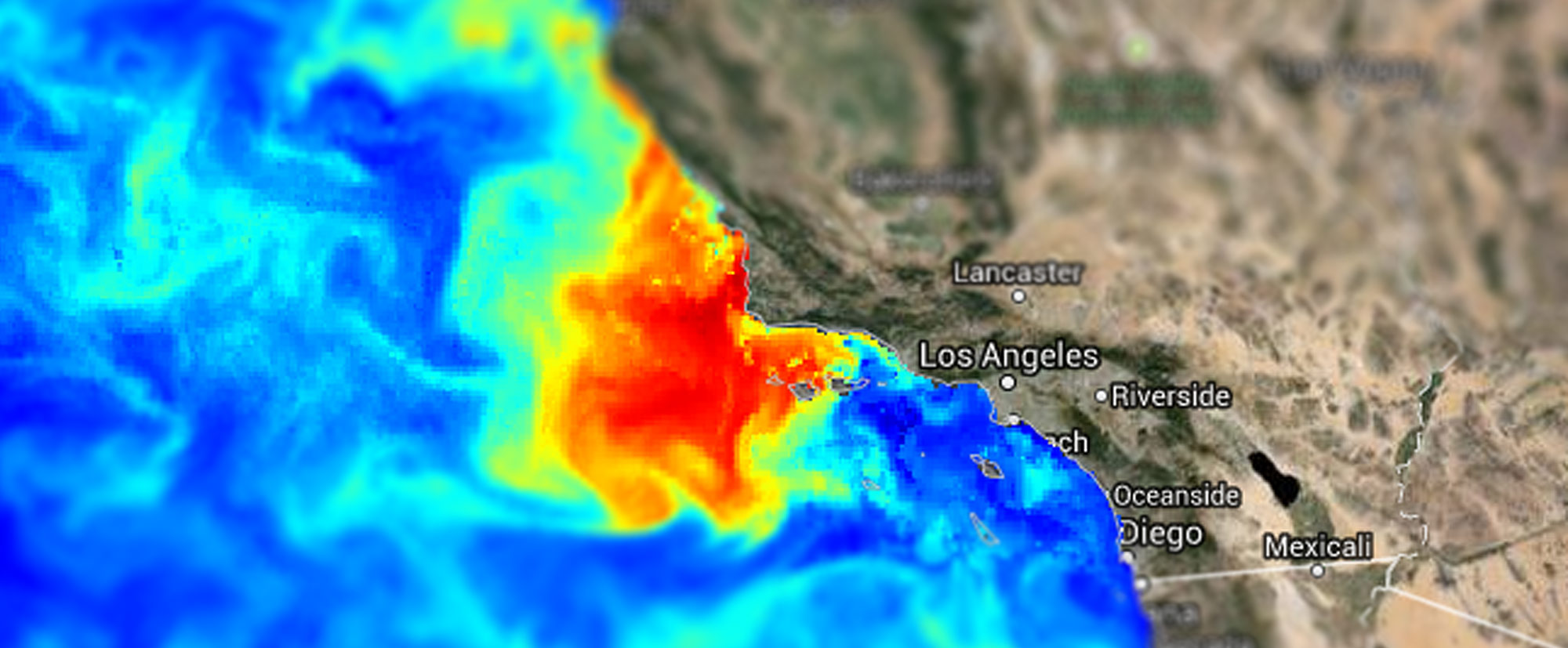Harmful algal blooms typically occur annually at "hot spots" along the U.S. West Coast. Some HABS produce a potent neurotoxin, called domoic acid, which can accumulate in shellfish, other invertebrates, and sometimes fish, leading to illness and death in a variety of seabirds and marine mammals. Human consumption of shellfish contaminated with domoic acid can result in amnesic shellfish poisoning, which can be life threatening, but is also rare. For finfish like salmon, tuna, and pollock, levels in edible portions of the animal are well below levels of concern for human consumption. The greatest human risk is from recreationally-harvested shellfish — commercial shellfish and finfish are closely monitored to ensure they are safe to eat. Alexandrium catenella blooms, which can cause paralytic shellfish poisoning, also occur throughout this region on an almost annual basis. A variety of other HABs occur sporadically in these regions which primarily threaten animal and ecosystem health.
NOAA Resources
Harmful Algal Bloom Monitoring System
NOAA's National Centers for Coastal Ocean Science developed this site to routinely deliver near real-time products for use in locating, monitoring, and quantifying algal blooms in coastal and lake regions of the U.S. This application delivers a suite of bloom detection products in the form of geographic based images.
Socioeconomic Impacts of Harmful Algal Blooms
An exploration of the human dimensions of harmful algal blooms (HABs) from NOAA's Northwest Fisheries Science Center.
NOAA Funds Harmful Algal Bloom Forecast System Development in Pacific Northwest (2016)
NOAA National Centers for Coastal Ocean Science article describing the development of a harmful algal bloom (HAB) forecast in the Pacific Northwest to support management of shellfisheries, clamming beaches, and human health.
NOAA awards $18.9M for harmful algal bloom research, monitoring
NOAA is announcing $18.9 million in funding for harmful algal bloom (HAB) research projects and monitoring activities throughout U.S. coastal and Great Lakes waters.
California Resources
The Pseudo-nitzschia toxin, which can cause amnesic shellfish poisoning, is of particular concern along the California coast. New research will improve modeling efforts to predict Pseudo-nitzschia blooms off Southern California and support environmental management efforts. A continuing project to understand the controlling factors of Pseudo-nitzschia toxin production and bloom formation will also help to improve early warning models. Another continuing project is providing a strategy to add monitoring of multiple marine and freshwater HAB toxins occurring simultaneously in shellfish and other organisms in estuaries, an emerging ecosystem and public health problem.
California Harmful Algae Risk Mapping
Models and information provided by the Central and Northern California Ocean Observing System.
California Toxic Phytoplankton
A GIS map that shows weekly observations of the distribution and relative abundance of Alexandrium, the toxin-producing dinoflagellate associated with paralytic shellfish poisoning, and Pseudo-nitzschia, the diatom that produces domoic acid.
Pacific Northwest & Alaska Resources
Both paralytic shellfish poisoning and amnesic shellfish poisoning are problems in the Pacific Northwest and Alaska, impacting commercial, recreational, and tribal subsistence shellfish harvesting. A continuing project is transitioning an early warning system for Pseudo-nitzschia along Oregon and Washington ocean beaches. Another project aims to uncover the mechanisms behind wintertime occurrences of paralytic shellfish poisoning toxicity in geoduck clam fisheries in Southeast Alaska. Predictive modeling and HAB monitoring provide managers with an early warning of when and where toxic blooms will affect shellfish harvests, providing better public health protection and safeguarding coastal economies.
Alaska
Alaska Harmful Algal Bloom Network
The Alaska HAB Network from the Alaska Ocean Observing System.
Southeast Alaska Tribal Ocean Research
The Southeast Alaska Tribal Ocean Research is focused on a variety of ocean research programs, including: improving tribal and rural access to traditional foods, monitoring toxic plankton blooms, testing shellfish for dangerous toxins, monitoring ocean chemistry, working with the EPA to raise water quality standards, and initiating a heavy metals testing program.
Oregon
Oregon Department of Agriculture: Recreational Shellfish Biotoxin Closures
Oregon Department of Fish and Wildlife: Harmful Algae
Washington State
Recreational Shellfish Information: Food Safety and Beach Closures
Beach closures, shellfish-related illness, and safety information from Washington State's Department of Health.
SoundToxins.Org
The goal of this cooperative partnership is to establish a cost-effective monitoring program that will be led by state managers, environmental learning centers, tribal harvesters, and commercial fish and shellfish farmers. The SoundToxins program aims to provide sufficient warning of HAB events to enable early or selective harvesting of seafood, thereby minimizing risks to human health and reducing economic losses to Puget Sound fisheries.
Olympic Regional Harmful Algal Blooms Partnership
This project is bringing knowledge to the local communities on the Olympic peninsula of the Washington State coast, empowering the tribes and state managers to make scientifically-based decisions about managing and mitigating harmful algal bloom impacts on coastal fishery resources.
Marine Toxin (Domoic Acid) Information
Razor Clam Seasons and Beaches
How to Dig Razor Clams
 An official website of the United States government.
An official website of the United States government.


Social